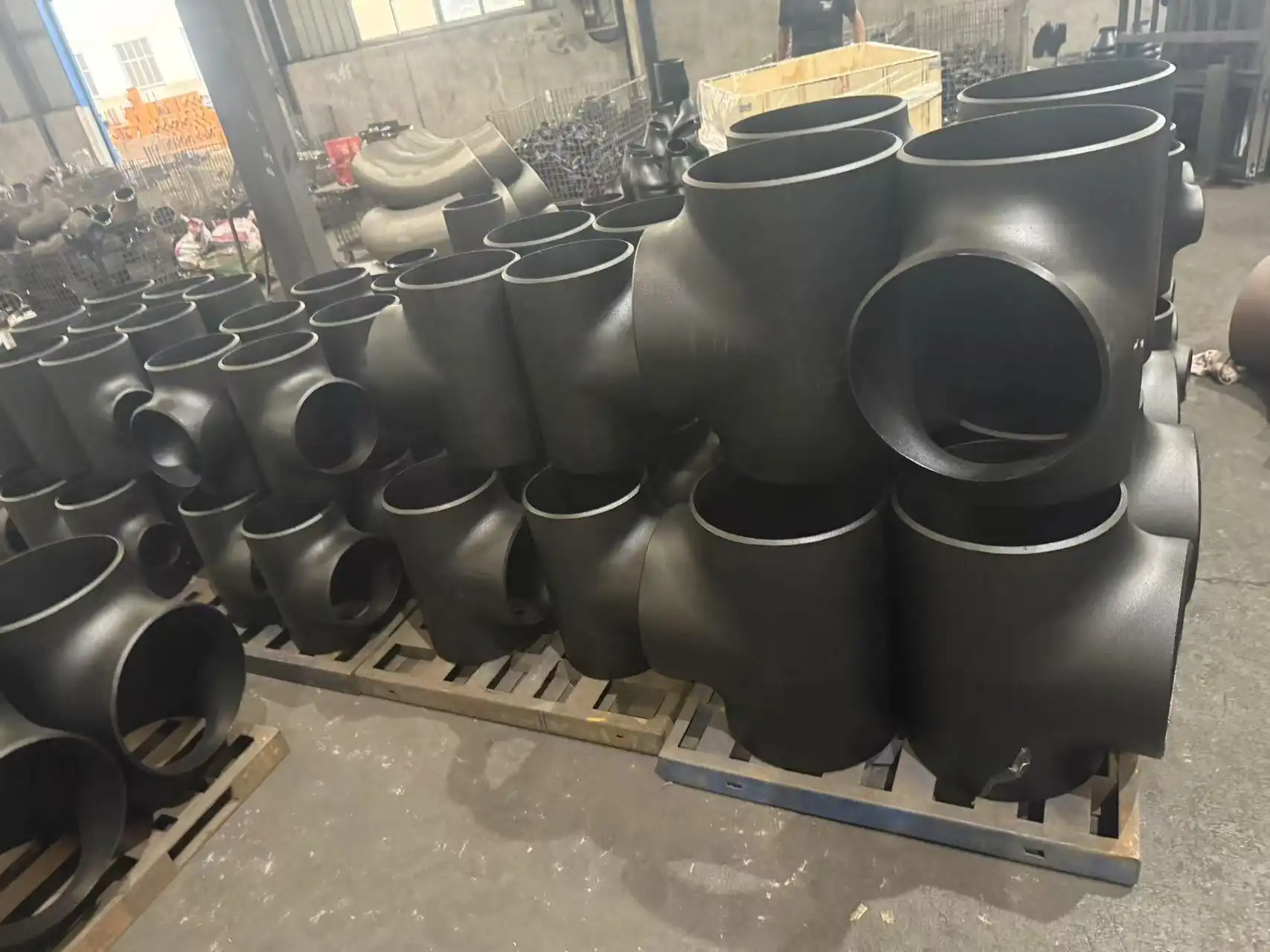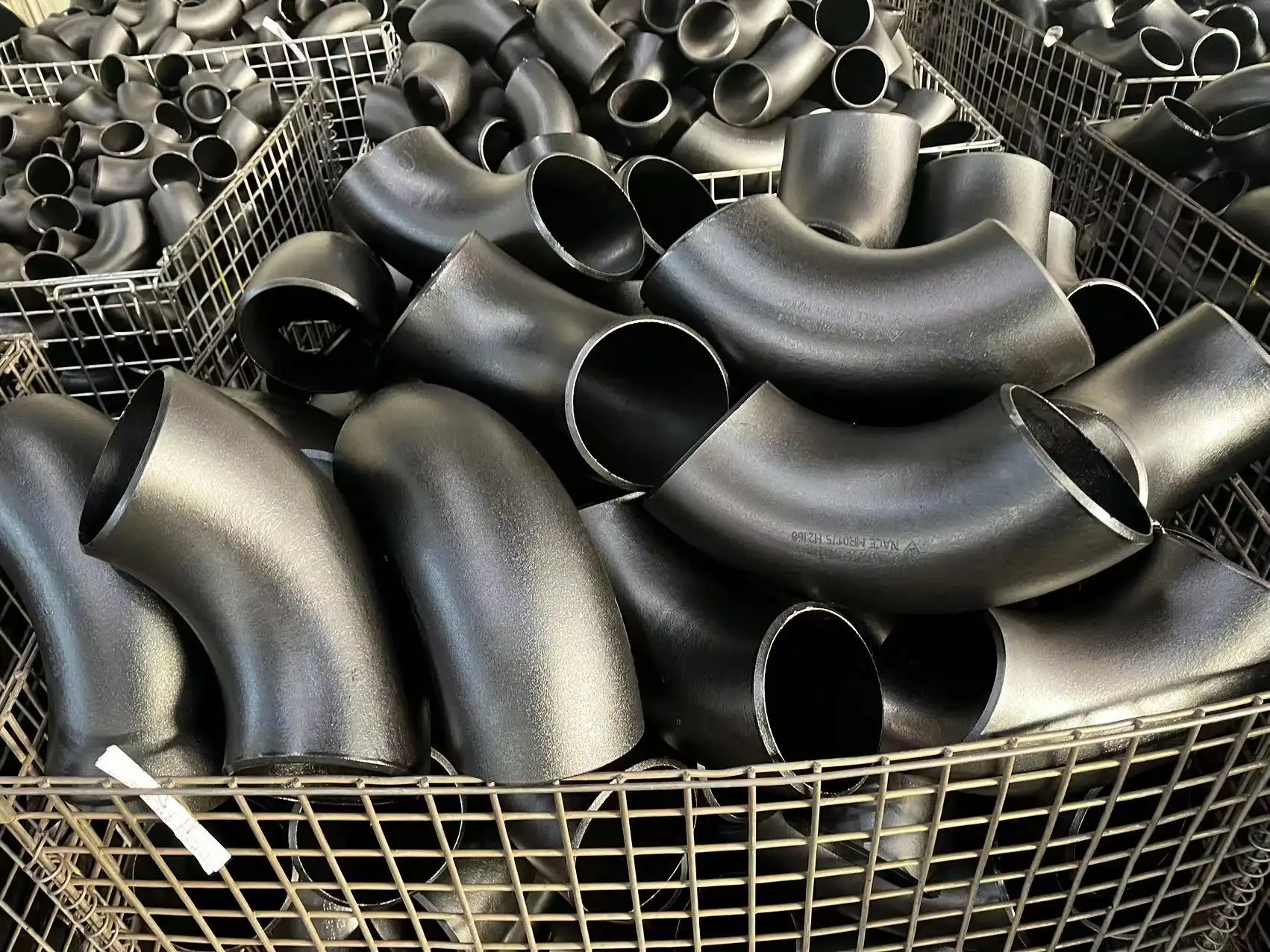What are the typical pressure classes for welded pipe fittings (Class 150–2500)?
Wedged pipe fittings come in different pressure classes so that they can meet the needs of different companies. These are the most popular pressure classes:
Class 150
This is the lowest normal pressure class, which means it can be used in low-pressure situations. Welded Class 150 pipe fittings are used in a lot of different types of plumbing systems, including HVAC and light industrial processes.
Class 300
Class 300 welded pipe fittings are often used in medium-pressure settings like power plants and chemical processing plants because they can handle higher pressures.
Class 600
These valves are often used in oil mills and other tough industrial places because they are made for high-pressure systems.
Class 900, 1500, and 2500
You will need one of these if you need to work with chemicals that are under a lot of pressure or dig for oil deep in the ocean.
Remember that the real pressure number for each class can be different depending on the material, the temperature, and the fitting type. These things should be very much on the minds of engineers and project managers as they pick the right pressure class for their pipe systems.
Pressure-temperature relationship for welded fittings under ASME B16.9 / B31.3
The American Society of Mechanical Engineers (ASME) has rules about what should happen at soldered pipe joints when the pressure and temperature change. Two important rules in this case are ASME B16.9 and ASME B31.3.
ASME B16.9 Standard
This standard is only about worked butt-welding parts that are made in a workshop. You need to know this code to understand how pressure pipe systems work in general, not just how to connect pipes.
ASME B31.3 Process Piping Code
You need to know this code to understand how pressure pipe systems work in general, not just how to connect welded pipe fittings. It gives instructions on how to plan, choose materials, build, test, examine, and check pipe systems.
Pressure-Temperature Tables
There are tables for both standards that show how the maximum allowed working pressure (MAWP) changes with temperature. For most materials, the MAWP goes down as the temperature rises because they are weaker at higher temperatures.
Material-Specific Considerations
Different materials exhibit varying pressure-temperature relationships. For example, carbon steel fittings may have a different pressure rating curve compared to stainless steel or alloy. It's not always simple to mix hot and cold things. Parts made of carbon steel might have a different pressure rating curve than parts made of stainless steel or alloy steel in this case. It makes sure that the welding pipe parts that were chosen can safely handle the effects of pressure and temperature together across the whole operating range of the system.
How wall thickness and material grade affect the pressure rating of welded fittings?
Two main things have a big effect on the pressure number of welded pipe fittings: the wall thickness and the grade of the material. These parts work together to show how well the joint can handle both internal and external forces.
Wall Thickness Impact
How much weight pressure-welded parts can hold depends a lot on how thick the walls are:
- As walls get stronger, they can handle forces from both inside and outside.
- Stress Spread: Stronger walls spread stress out more widely, which makes it less likely that they will fall down.
- Pressure Capacity: Fittings with larger walls can usually handle more pressure.
Material Grade Influence
The type of material the welded pipe fittings are made of also has a big effect on their pressure rating:
- Strength at Break: Tougher materials can deal with more stress because they break with more force.
- Time and Stress: When the temperature changes, different things don't always respond the same way. Price and warmth don't always go together, then.
- When it comes to protecting against rust, some types can handle acidic conditions better and keep their shape and pressure number over time.
Interplay Between Wall Thickness and Material Grade
There is a complicated link between these factors:
- Engineers often find the best mix of wall thickness and material grade to get the pressure number they want while keeping cost and weight in mind.
- Lots of the time, safety factors in codes and standards need to take into account how different things behave and are made.
- Things to Think About Based on the Application: Some of the things that can change the choice of wall width and material grade are the chance of corrosion, the chance of wear, and changes in temperature.
How do wall thickness and material grade connect to each other? This will help you get the right welded pipe parts for your needs. Engineers and project managers can use it to be sure that the parts they choose will work safely and reliably when put under the needed stress. It also gives them ideas for other changes that could be made to the way things work.

Conclusion
To sum up, knowing the pressure values of welded pipe fittings is important for making sure that plumbing systems in many different businesses are safe, reliable, and efficient. Every part of a fitting's performance under pressure is very important. Other things that matter are the normal pressure classes, which go from Class 150 to Class 2500; the difficult ASME-set links between pressure and temperature; and the important roles that wall thickness and material grade play.
End users in the industry, EPC makers, and buyers need to do more than just pick the right welded pipe parts with the right pressure values. They also need to do this to lower the risks of the project, ensure safety in the long term, and improve the way things work. When making decisions about your pipe systems, you can make them work well and last a long time by thinking about things like the job site, the materials, and the industry codes.
Here at HEBEI RAYOUNG PIPELINE TECHNOLOGY CO., LTD., we know how important these things are. As a top producer of high-quality welded pipe fittings, we have a wide range of goods that are made to meet the needs of different businesses with different pressure rating needs. With GOST-R and SGS certifications to back up our commitment to quality, you can be sure that the parts you receive will not only meet but also beat industry standards.
FAQ
1. How do I determine the correct pressure rating for welded pipe fittings in my project?
You should think about the range of temperatures, the type of fluid, the area around you, and the higher working pressure to get the right pressure number. For information on your individual fitting material and class, look at the ASME guidelines and pressure-temperature rate charts. When in doubt, it's always best to work with experienced experts or get help from reliable companies like RAYOUNG.
2. Can welded pipe fittings be used in high-temperature applications?
But the pressure number usually goes down as the temperature goes up. Welded pipe joints can be used when the temperature is high. The right materials should be used, and the right amount of pressure should be used to make parts that can handle a wide range of temperatures. Talk to experts and look at tables that show the grade for pressure and temperature before you use something that is hot.
3. How often should welded pipe fittings be inspected to ensure they maintain their pressure rating?
How often inspections are done varies on a number of things, such as the product, the surroundings, and government rules. In general, a full check should be done once a year, and eye exams should be done more often. More frequent checks may be needed for things that are very important or for places that are very rough. Always follow the rules for your business, and talk to professionals to come up with a good review plan.
Expert Welded Pipe Fittings for Every Pressure Rating | RAYOUNG
You can get all the welding pipe parts you need for pressure grade from HEBEI RAYOUNG PIPELINE TECHNOLOGY CO., LTD. The parts we have run from Class 150 to Class 2500 and are all very good. We can do any job for you, no matter how hard or important it is.
You can trust our soldered pipe parts because people from all over the world have used them and liked them. Even though they are scared, they will do a great job. We can help you choose the right tools for the job and make sure they keep you safe and do their job well.
Don't skimp on good lines or safety. Contact RAYOUNG today at info@hb-steel.com to discuss your welded pipe fitting needs and discover how our pressure-rated solutions can elevate your project's success.
References
1. American Society of Mechanical Engineers. (2018). ASME B16.9-2018: Factory-Made Wrought Buttwelding Fittings.
2. American Society of Mechanical Engineers. (2020). ASME B31.3-2020: Process Piping.
3. Nayyar, M. L. (2000). Piping Handbook (7th ed.). McGraw-Hill Education.
4. Smith, P. (2015). Piping Materials Guide: Selection and Applications. Elsevier.
5. American Petroleum Institute. (2019). API Specification 5L: Specification for Line Pipe.
6. Soares, C. (2014). Gas Turbines: A Handbook of Air, Land and Sea Applications (2nd ed.). Butterworth-Heinemann.







